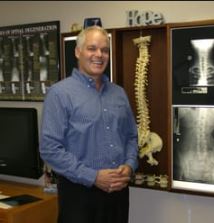“Is Spinal Manipulation and Osteopathic Manipulation one and the same?”
I have been suffering from stiffness in my joints, especially while walking. Should I try spinal manipulation or osteopathic manipulation (or are they the same thing)?
15 Answers
OsteopathicManipulativeMedicineOsteopathicManipulativeTreatment
Chiropractors have a lot more training in spinal manipulation than any other profession. I would consider them first, in my professional opinion.
Spinal manipulation is one subset of Osteopathic treatment, and in itself is a broad term that can be done (with different techniques and approaches) by Osteopathic physicians and chiropractors, and sometimes even by specially trained MDs or physical therapists. Osteopathic physicians have a very wide range of techniques ranging from quick forceful manipulations to slow and gentle treatments to achieve improvement in mobility and motility throughout the body. We address more than just the joints, and focus on improving the overall function of the integrated neuromusculoskeletal system
Chiropractic spinal manipulation and osteopathic manipulation are similar so both are appropriate but there aren't many Osteopaths doing manipulations these days.
Start with a detailed assessment of what is causing the stiffness. Is it purely mechanical or is there something else in play (ie: arthritis). Spinal or chiropractic 'manipulation' or adjustments tend to be more specific and focused to a single joint. Osteopathic manipulations tend to be more global or focused on a region.
No -- osteopathic manipulation is done by doctors of osteopathy and is usually very forceful -- chiropractors are much better at specific manipulations and adjustments.
They are basically the same thing, although the "conservative" chiropractors will tell you they are different--that the chiropractic "adjustment" is performed with some magical intent (of course they won't tell you that). I worked with an osteopath for 10 years and what I noticed about the way he used spinal manipulation was that his manipulation was very general--treating an entire area vs. what I did, which was very specific based on my examination. My recommendation would be to use a chiropractor, but find one who belongs to the American Chiropractic Association, West Hartford Group, or has a certification in sports chiropractic (credentials are CCSP or DABCSP). If you have an osteopath you already know, just ask him or her if they commonly use spinal manipulation in their practices (many don't).
Hope that helps.
Michael P. Simone, DC
Hope that helps.
Michael P. Simone, DC
Chiropractic manipulation and osteopathic manipulation are similar - but different. Both can be beneficial if applied appropriately. Chiropractic manipulation is typically applied to a specific vertebrae whereas osteopathic manipulation is usually more general. Therefore, chiropractic and osteopathic manipulative techniques differ. But also (and to make this more confusing) - manipulative techniques often differ depending upon the practitioner.
Both manipulations are considered the same. The difference is in who is delivering the manipulation. Chiropractors are trained to specifically adjust and manipulate joints while osteopathic manipulation is more unspecific and goes after a less specific target. Depending on whom you are more comfortable with, it will help you.
Vishal K. Verma, DC, CCSP
Vishal K. Verma, DC, CCSP
Chiropractic Adjustments and Osteopathic Manipulation are 2 types of Spinal Manipulation. Both are good options to resolve stiffness in your joints.
Good question. Chiropractors are trained for years on various adjusting techniques. In contrast, Osteopathic manipulations are also effective but they don’t put a lot of time into the Art of adjusting. In conclusion, it truly depends on the skill of the practitioner.
Thank you for your question. Spinal manipulation provided by a chiropractor or an osteopath is very similar. D.C.s usually use a high velocity low amplitude thrust to manipulate most joints depending on the need. Most D.O.s use a more low velocity mobilization to accomplish the release. Both are effective.









